Reviews
Paul W.S. Anderson
USA, 1997
Credits
Review by Glenn Heath Jr.
Posted on 30 October 2011
Source Paramount DVD
Categories 31 Days of Horror VIII
Dissect Paul W. S. Anderson’s splatterific sci-fi mash-up Event Horizon and you’ll find the brittle skeleton of Alien, the perforated heart of Solaris, the jet-black soul of The Shining, and the self-aware brain stem of 2001: A Space Odyssey. It’s a deformed example of cinematic physiology 101, an anarchic game of Operation conducted by a mad scientist so drunk on genre kool-aid he can’t help but slather the frame with arterial spray. Considering how haphazardly Anderson gloriously meshes each of these influences together, it isn’t surprising Event Horizon is a complete mess from top to bottom. Frankenstein’s monster didn’t have this many spare parts. But like so many conflicted horror films, the unflinching narrative illogic and aesthetic reckless abandon is also the film’s greatest asset, celebrating the hidden demons of self-doubt and guilt lurking in the shadows with a flare for cinematic dynamism. In fact, every sequence is as over-the-top genre sprint, as much a study in brain-to-brain manipulation as it is hand-to-hand confrontation. The frayed result is a diabolical gateway to hell.
If Event Horizon’s opening shot is any indication, the devil’s doorstep can reveal itself in a flash. As the opening credits momentarily grace the frame, a pulsating black hole oozing blue light waves sucks the filmmaker’s names into a black intergalactic void. The image slowly blurs into a foggy haze, suggesting the idea that time and space are bendable elements about to break. After a series of inter-titles contextualize the historical timeline surrounding the disappearance of spaceship Event Horizon near Neptune in the year 2040, a distraught Dr. William Weir wakes up in 2047 from a terrible vision of a disfigured man screaming inside a dilapidated ship’s hull. Here, Event Horizon goes from horrific to near silent in an instant, and with this tonal shift Anderson introduces his strongest stylistic technique: jarring smash cuts punctuated by loud sound bridges between a character’s dream state and waking nightmare. Weir’s fractured perspective only gets worse after he joins a motley space crew led by Captain Miller and Lt. Starck on a mission to investigate a distress call emanating from the long lost Event Horizon.
In terms of social representations, Anderson draws a fine line in the sand between Weir, an uptight corporate slog who designed the Event Horizon as a manmade portal to bend time, and the blue-collar space grunts of Captain Miller’s crew. Whereas Weir is given a subtle, crisp, and in many ways visually horrific first glance inside a cramped non-descript room, the latter group is only allowed meager exposition, introduced via their slick rhymes and puns while they prepare to embark for Neptune. “Someone drops the ball, we get the call,” Miller smoothly says as he rallies his bunch for takeoff, preaching a kind of working class poetry that Anderson relishes. As Event Horizon progresses, Weir and his upper class angst is framed as the core human disease, so it’s fitting that he obtains a level of narrative focus early on and Miller’s crew doesn’t. Still, Weir turns into a brutal cipher and Miller et al. obtain a level of complexity through their violent deaths.
Economic storytelling becomes key to Event Horizon, despite all its narrative pomp and circumstance. After a series short scenes and quick cuts, the group reaches Neptune’s wavy blue surface, boards the Event Horizon’s perimeter, and starts experiencing terrifying hallucinations that stem from their worst past traumas. The ship’s cramped interiors are a blatant rip-off of Ridley Scott and Michael Seymour’s cavernous mise-en-scene in Alien, one shadowy corner after another momentarily illuminated by flashing fluorescents and bursts of steam. “This place is a tomb,” a crewmember comments upon boarding the ship, and Anderson’s manic camera does a good job of suffocating the life out of each space. Character’s quickly begin to see flashes of terrible nightmares, and it doesn’t take long for them to piece together the film’s flimsy plot: the Event Horizon has just returned from another dimension ruled by chaos, bringing back with it an evil force that will defend against any and all intruders by driving them mad. One senior officer sees an image of her disable son pockmarked by bloody soars, while Miller himself envisions the burning corpse of a fallen comrade he couldn’t save years previous. All of them are strikingly surreal cinematic snapshots.
The blood-caked walls of the Event Horizon evoke an element of dread from the very first moment the titular ship is breached, but nothing quite prepares Miller, Weir, and the crew for the level of brutality to come. With its protracted death scenes and revelations of mental/physical torture, Event Horizon foreshadows the Saw series in many thematic ways, putting an emphasis on lingering guilt and past sins ultimately manifesting itself at the moment of death. Some of these set pieces are downright silly, like the moment where a deranged crewmember named Justin propels himself into outer space via an airlock, vomits blood mid-jump, and is rescued by Miller in one fell swoop. But others are amazingly successful at mixing Slasher film conventions with the more restrained bits of psychological horror. Toward the end, when Weir goes completely mad and stalks Miller’s every move, Anderson focuses intently on the textures of mutilated skin and body parts. This culminates in a frightening standoff framed by the orb-like mechanism that allows the ship to bend time. The shot of Weir’s bloodied face smiling, crisscrossed with deep cuts like a torn up canvas, becomes a portrait of the ship itself, an unseen ghoul dying to take Miller and his crew for a ride with the devil.
One moment a raging horror film, the next a restrained examination of psychological inanity, Event Horizon takes its genre schizophrenia to sadistic extremes. But this is what makes it such a fascinatingly deformed horror hybrid, an uneasy cinematic example of 1990s horror caught between the golden genre years of the 1980s and the postmodern phantasmagoria of the 2000s. It’s a film of terrible personal moments, and despite his sledgehammer theatrics and hilarious flair for bad dialogue, Anderson creates a confined nightmare landscape from the leftover mush of other better films. At one point, after a particularly haunting psychological exchange, one character screams, “This ship is fucked!” Looking at how cynical and pessimistic Event Horizon becomes, this might one of the biggest understatements in horror film history.
More 31 Days of Horror VIII
-

Westworld
1973 -

Child’s Play
1988 -
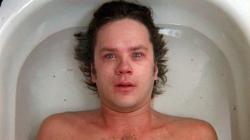
Jacob’s Ladder
1990 -
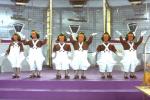
Willy Wonka and the Chocolate Factory
1971 -
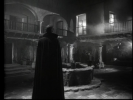
El Vampiro
1957 -
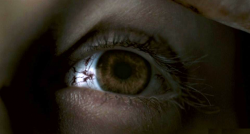
28 Weeks Later
2007 -

Piranha II: The Spawning
1981 -
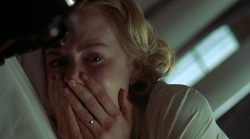
The Others
2001 -
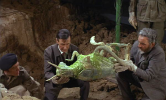
Quatermass and the Pit
1967 -

I Know Who Killed Me
2007 -
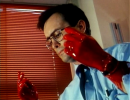
Bride of Re-Animator
1990 -

Alucarda
1978 -
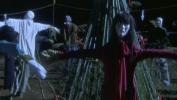
Kakashi
2001 -

Seizure
1974 -
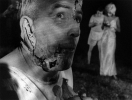
Night of the Living Dead
1968 -
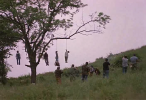
Night of the Living Dead
1990 -
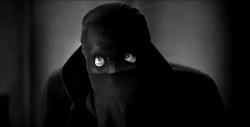
The Bat Whispers
1930 -

Miracle Mile
1988 -

Tintorera
1977 -

Paradise Lost
1996 -

The Cars that Ate Paris
1974 -

Ginger Snaps
2000 -
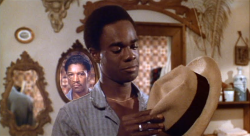
J.D.’s Revenge
1976 -
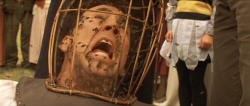
The Wicker Man
2006 -

Black Water
2007 -
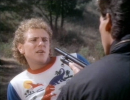
Don’t Panic
1988 -
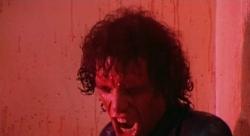
The Driller Killer
1979 -

Targets
1968 -

Mahal
1949 -
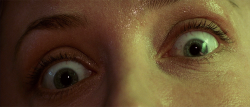
Event Horizon
1997
We don’t do comments anymore, but you may contact us here or find us on Twitter or Facebook.



